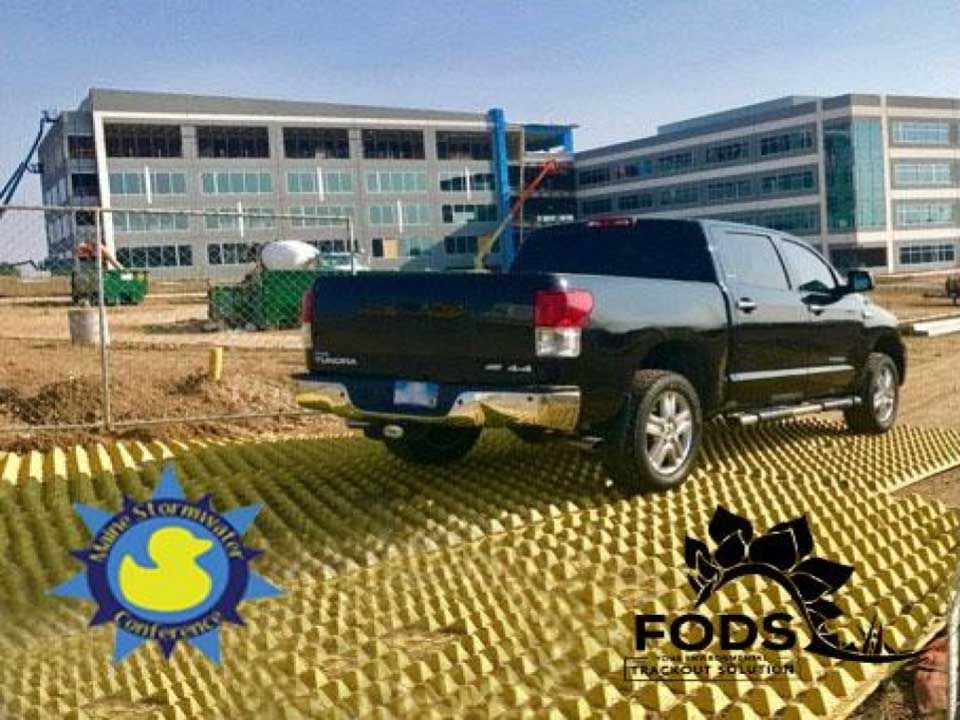Maine Stabilized Construction Entrance / Exit Detail
Maine boasts 3,478 miles of tidal coastline giving it the title of fourth longest shoreline of any other state even larger states like California and Texas. The coast’s jagged characteristics are responsible for this feat, but it is not the only unique feature of Maine. Nicknamed the Pine Tree State, Maine’s inland area consists of over 80% forests, and with most of this land uninhabited and unclaimed the population density is the lowest of any state east of the Mississippi. This open and free land gives rise to a large array of wildlife native New England including moose, bald eagles, and the Canadian Lynx.
Stretching into Maine the White Mountains are the northern most reaches of the Appalachian Mountains. This mountainous region is responsible for most of the fresh water that fills the states river and stream system and eventually, growing to rivers, flow into the sea. Most notable of these rivers is the Kennebec River that runs nearly 270 miles from its origin at Moosehead Lake. The river collects stormwater from nearly 6,000 square miles and discharges almost 6 billion gallons of water into the Atlantic yearly. The largest hydroelectric dam is also located in the path of the Kennebec and energy from its waters benefits residents and industries throughout Maine.
Unfortunately, during the early years and through the middle of the 20th century Maine’s rivers were also used as dumping sites for the growing industries within the state. Consequently, the quality of the surface water and subsequently the ground water were negatively affected. The health of the people, wildlife and economy is directly affected by the purity of its water supply and therefore the federal and local governments have taken initiatives to reverse the pollution of Maine’s stormwater system. It is the responsibility of the residents, industries, and government alike to continue to work together to rehabilitate this natural and valuable resource.
Maine DEP NPDES Stormwater Construction Permits
The federal government began the Federal Water Pollution Control Act in 1942 which was amended in 1972 and became the Clean Water Act (CWA). These initiatives sparked laws and guidelines for industries and construction projects to mitigate pollutants introduced into the watershed system. Most notably of these requirements is the National Pollutant Discharge Elimination System (NPDES) Permit created by the EPA. This permit requires industries and construction operators to create plans that will reduce or eliminate the negative impact of its activities.
In Maine the EPA has delegated the responsibilities of controlling the NPDES permit process to the Maine Department of Environmental Protection (DEP). For specifically construction related activity the proper permit is the Maine Construction General Permit (MCGP). Any facilitator of a construction project that will affect one acre of land or more is required to apply for a MCGP before performing any construction activity. In order to receive a MCGP several forms are required to be submitted including Notice of Intent (NOI) and Notice of Termination (NOT). The creation of an Erosion and Sediment Control Plan (ESC) is also a prerequisite to applying for a general permit. The ESC Plan outlines the specific actions that will be taken on part of the operator to prevent the construction activity from introducing pollutants into the surrounding public storm water system. Common issues covered in an Erosion and Sediment Control Plan are dust control, stabilization of high erosion areas, seeding, and construction entrance anti-tracking pads.
The Maine DEP produces resources to help contractors and engineers prepare their ESC and SWPPP. DEP Resources include a Field Guide for Contractors, a Manual for Designers and Engineers, the Maine Erosion and Sedimentation Control BMPs, and the Stormwater Best Management Practices Manual.
Construction Entrance / Exit Detail
One of the first BMPs to be installed on any construction site is a Construction Entrance/Exit. The high traffic area at the ingress/egress points of a construction site are concerning zones for safety and sediment control. Excessive erosion can create unstable ground for vehicles as they enter the site, and therefore it is important to stabilize and regularly maintain these areas. As vehicles move around the construction site sediment and other possible pollutants cling to the tires. The vehicles that leave the site and enter the public road system are a high contributor to the spread of impure soil into the watershed system. In order to mitigate this pollution source, construction entrances/exits are installed to remove sediment from vehicle tires. Stabilized construction entrances are installed at all site exit points that exit onto paved or other impermeable roadways to ensure that construction track out is contained from all exit routes.
Construction Entrance BMPs work in parallel with other BMPs to mitigate trackout pollution including street sweeping, sediment basins, and storm drain protection.
All BMPs for construction entrance must be regularly inspected and maintained to ensure effective containment of sediment. Additional inspections should also be conducted after each rain event. In addition to regular inspections and repairs to the construction entrance, operators are required to sweep the street anytime sediment is deposited onto the paved roadway to prevent sediment from entering storm drains.
Aggregate Sediment Control Options
The Manual for Designers and Engineers includes examples for the development of a stabilized construction exit using a traditional aggregate based design. This type of entrance consists of a pad of course aggregate which creates a rough surface that forces sediment from tire treads.
This technique uses 2” – 3” diameter angular stone to remove and trap sediment as the tires contact the pad. The manual indicates minimum dimensions for a construction entrance are 50’ in length and 12’ in width. This method requires a depth of at least 6” of stone placed over a geotextile filter fabric used to prevent the pollutants from entering the native soil under the entrance area. The angular stone should be sized to the largest vehicles that will be using the entrance to prevent stones from becoming lodged between dual tire vehicles or tracking onto the active roadways.
The aggregate on the construction entrances works to trap sediment and will eventually become saturated with mud and debris. In addition, repeated vehicle passes over the rock will cause the pad to flatten. In either of these cases performance is reduced, so the entrance will require maintenance to recreate the rough surface. Maintenance includes delivering additional aggregate to top dress the entrance and restore the rough surface.
At the end of the project, the rock must be removed and disposed of so allow final remediation of the area.
Wheel Wash
In addition to these two construction entrance methods is the option to add a wheel wash station to either. This BMP can be used as a stand alone solution or used in conjunction with other construction entrance/exit techniques. A wash station is a commonly installed on construction sites with excessive vehicle traffic or sediment tracking. Wheel wash stations can use automated or manual methods for cleaning vehicle tires, but will always use pressurized water to remove pollutants from vehicle tires.
Wheel wash stations must direct any waste water into a sediment basin as it will contain excessive sediments and contaminants. The wheel wash station will also require a source of power and water.
FODS Reusable Stabilized Construction Entrance System
The FODS Stabilized Construction Entrance System is an effective, reusable solution to construction site track out. The system has been demonstrated to reduce street sweeping by 59% on high volume job sites. The system is comprised of HDPE matting which is formed into pyramids which create a permanent rough surface to deform tires. As construction vehicles pass over the mats, tire treads are spread open to release trapped debris. The system does not introduce aggregate to the job site and provides a safer solution compared to traditional methods as there is reduced risk of aggregate tracking onto an active roadway. Sediment is collected in the voids between pyramids which can be swept free during regular maintenance.
Because the system is more effective than rock, the mats are well suited for tight work environments. A 1x5T mat configuration is commonly used as an alternate BMP to a 70’ rock entrance while providing a wide turning radius for exiting traffic. The mats provide a significant savings to contractors as they can be reused for 10+ years, eliminating the cost of construction entrance materials. FODS can be installed in as little as 30 minutes and can be anchored to nearly any substrate including dirt, concrete, and asphalt.
Additional Resources
Manual for Designers and Engineers
Maine Erosion and Sedimentation Control BMPs

